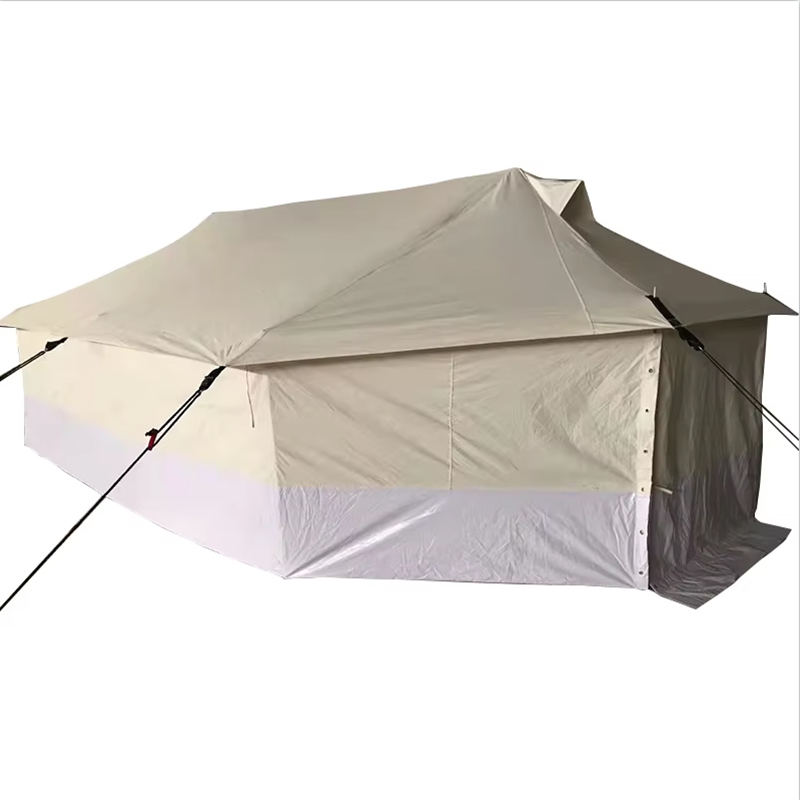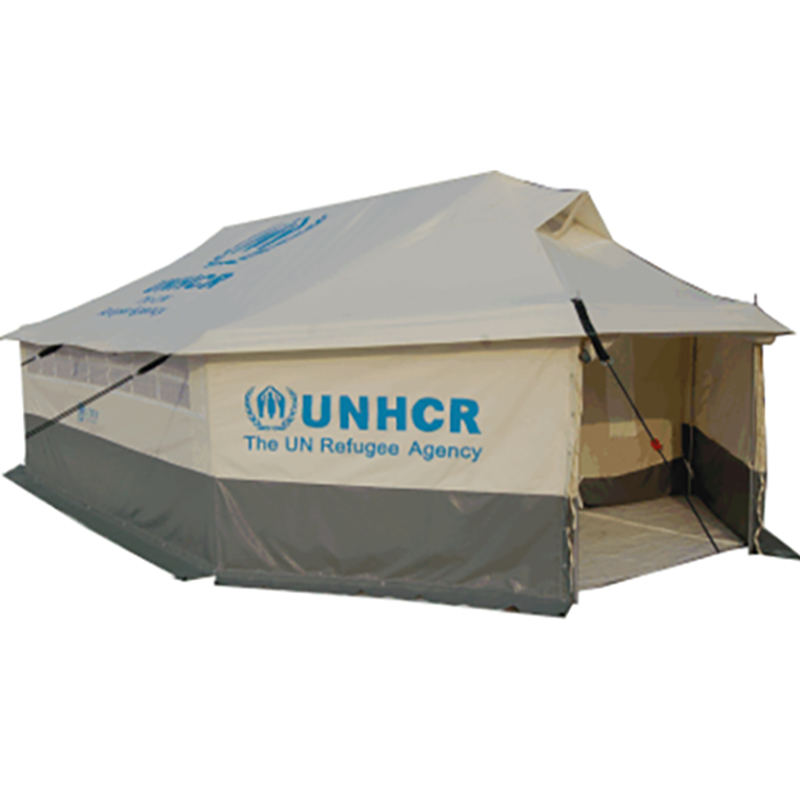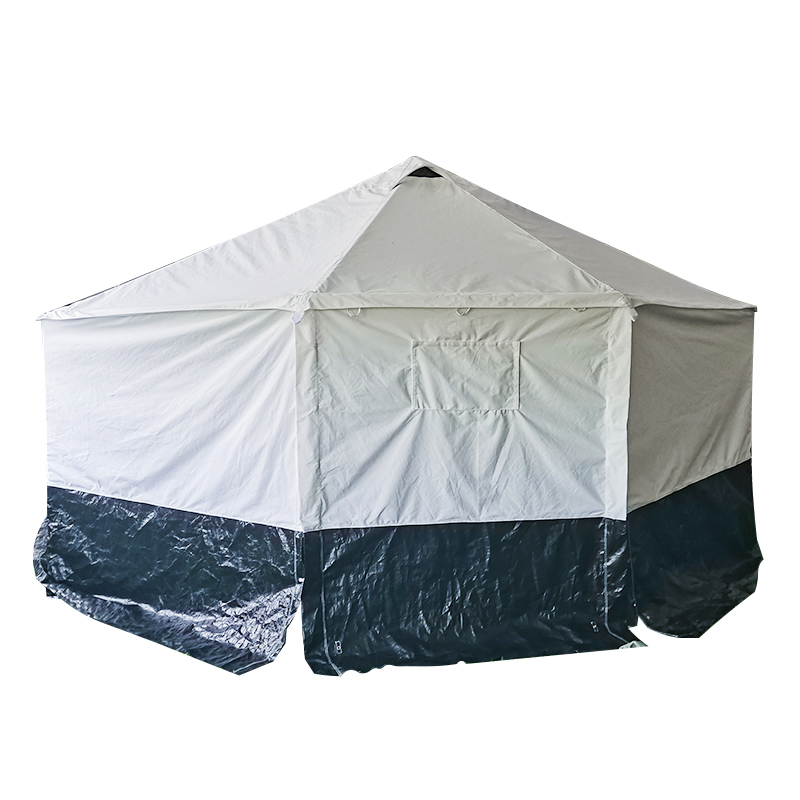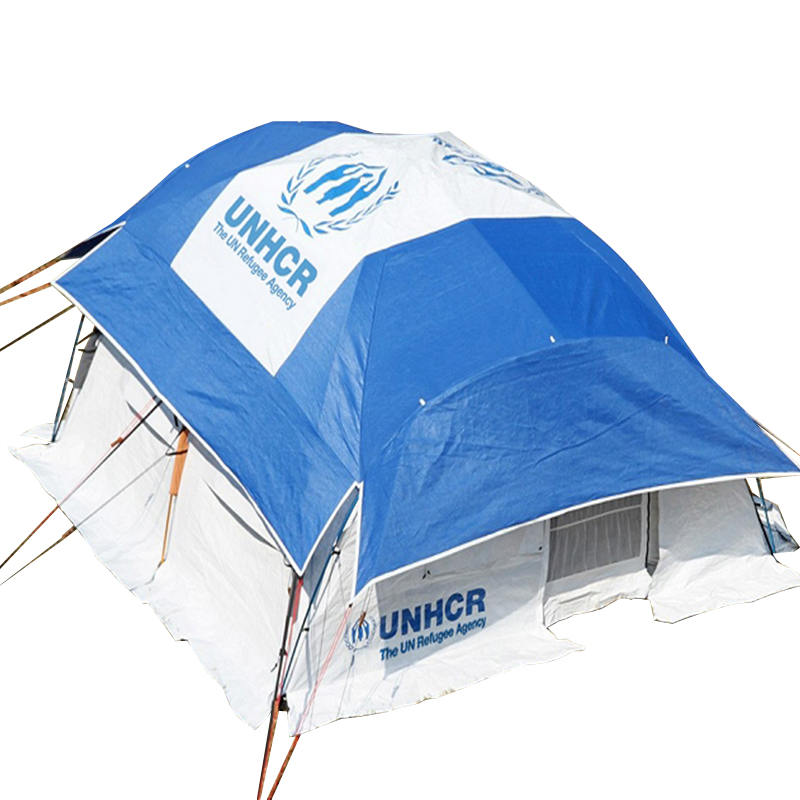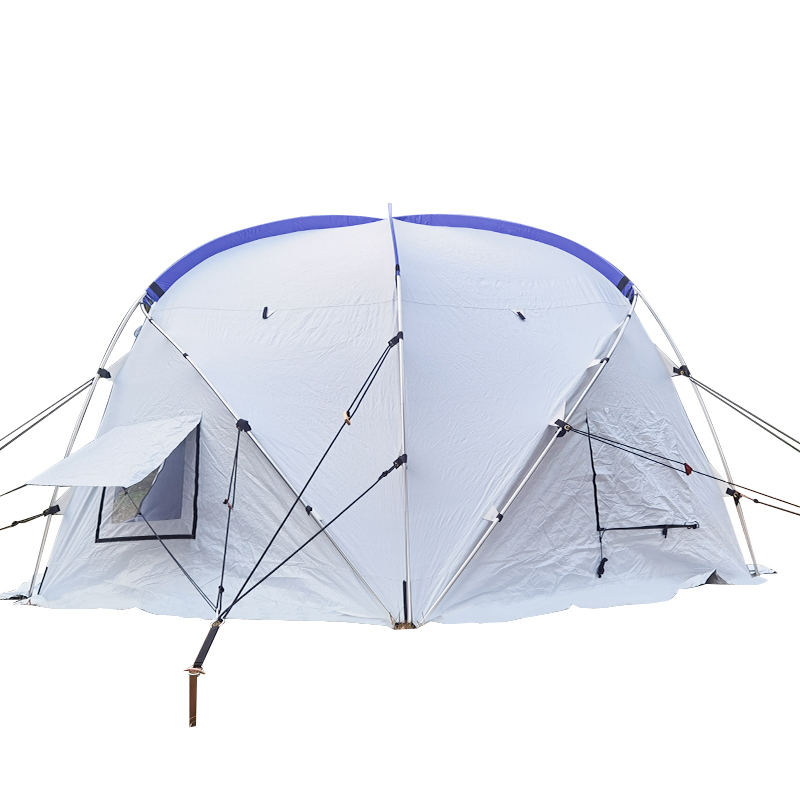Our story is about how to uphold the spirit of humanitarianism in the face of disaster, how to find solutions amidst challenges, and how to sow hope in despair.
Web Menu
Product Search
Exit Menu
How to Pick a Tent With Good Ventilation for Summer Camping? Expert Tips to Beat the Heat
Posted by Admin | 30 Sep
There’s nothing quite like summer camping—until your tent turns into a stifling hotbox. A poorly ventilated tent doesn’t just ruin comfort; it can also lead to condensation buildup, mosquito invasions, and even sleepless nights. The key to staying cool lies in choosing a tent designed to maximize airflow while maintaining protection. Below is a comprehensive guide to selecting a summer-ready, well-ventilated tent.
Why Ventilation Matters More Than You Think in Summer
Ventilation is non-negotiable for summer camping, and its importance goes beyond just "feeling cool." First, it regulates temperature: trapped hot air can make tent interiors 5-8℃ warmer than the outside air, turning your shelter into an uncomfortable oven . Second, it controls condensation—moisture from breathing and sweat accumulates quickly in sealed spaces, leaving gear damp and creating a breeding ground for mold . Third, proper airflow works with mesh barriers to keep mosquitoes and other pests out while letting fresh air in, eliminating the need to choose between comfort and protection . For extended trips or humid climates, good ventilation can mean the difference between a refreshing getaway and a miserable experience.
Start With Tent Type: Which Styles Excel at Airflow?
Not all tents are created equal when it comes to ventilation. Certain designs are engineered to promote natural air circulation, making them ideal for summer use:
Dome Tents with Dual Openings: The classic dome shape, supported by crossed poles, creates vertical space that allows hot air to rise. Models with double doors and matching mesh panels on opposite sides facilitate cross-ventilation, pulling in cool air and pushing out heat .
Four-Sided Mesh Tents: These tents feature large mesh panels on multiple sides that can be rolled up or fully opened. Some even let you prop up door flaps with poles to create a makeshift awning, boosting airflow without sacrificing shade .
Sky curtain- Integrated Tents: Tents with attached or compatible sky curtain extensions keep direct sunlight off the main shelter, reducing heat absorption. The gap between the sky curtain and tent roof also creates a buffer zone for air circulation, preventing heat from seeping through the outer fabric .
Three-Season Tents: Unlike heavy four-season models (designed for insulation), three-season tents prioritize breathability with lighter materials and more open designs. They typically skip the extra fabric layers that trap heat, making them perfect for warm-weather use .
Key Ventilation Features to Inspect Closely
Once you’ve narrowed down the type, examine these specific design elements to ensure optimal airflow:
1. Mesh Panels: The Foundation of Airflow
High-quality summer tents use mesh extensively in their inner structure. Look for full or partial mesh inner tents—nylon or polyester mesh works best, as these materials balance breathability with durability . Pay special attention to door and window coverings: mesh inserts should be fine enough to block small insects but porous enough to let air pass through. Some models even feature 360-degree mesh walls for unobstructed airflow while keeping pests at bay .
2. Strategic Vent Placement
Quantity matters, but so does location. The most effective ventilation systems use a "hot air escape + cool air intake" setup:
Roof Vents: Also called "chimney vents," these are critical for releasing hot air, which naturally rises. Look for roof vents with waterproof covers that can stay open even during light rain .
Side and Floor Vents: Low-placed side or floor vents draw in cooler air from the ground, creating a vertical airflow cycle when paired with roof vents. This circulation prevents stagnant air pockets .
Dual Door Vents: Doors on opposite sides of the tent act as natural air channels. When both are partially unzipped (with mesh panels closed), they create crosswinds that rapidly cool the interior .
3. Double-Layer Construction
A tent with separate inner mesh and outer rainfly (double-layer design) is a summer must-have. The gap between the two layers acts as an air buffer, preventing the sun-warmed outer fabric from heating the inner space directly . When the rainfly is peaked away from the inner tent (using extended poles), it further enhances airflow while maintaining UV protection.
Material and Color: Hidden Factors Affecting Ventilation
What a tent is made of—and what color it is—directly impacts how well it ventilates and stays cool:
Fabric Breathability: Opt for outer fabrics like lightweight nylon or polyester with minimal coating (beyond essential waterproofing). Avoid thick, rubberized materials that block air flow. Some fabrics include waterproof-breathable membranes that let moisture escape without letting rain in . For inner tents, prioritize high-density mesh that balances airflow and insect protection .
Light Colors for Heat Reflection: Dark fabrics absorb sunlight and trap heat, while light colors (white, beige, light blue) reflect rays, keeping the tent cooler . Testing shows light-colored tents can be several degrees cooler than dark counterparts, reducing the strain on your ventilation system.
Pole Material for Structural Efficiency: Lightweight, strong poles (like aluminum) allow for taller, more open tent designs that accommodate better air circulation. Bulky or flimsy poles may limit space and airflow potential .
Avoid These Common Ventilation Mistakes
Even with a well-designed tent, poor choices can negate its ventilation benefits:
Ignoring Size Needs: Overcrowding a tent reduces airflow—always choose a size larger than your party count. A 2-person group should opt for a 3-person tent to leave space for gear and air circulation .
Falling for "All-Season" Hype: Four-season tents are built for insulation, not summer airflow. Their thick fabrics and minimal mesh will trap heat, no matter how many vents they have .
Overlooking Setup Location: Even the best tent will struggle if pitched in direct sunlight with no wind. Pair your ventilated tent with a shaded spot (under trees or near natural windbreaks) to maximize cooling effects .
Final Checklist for a Cool Summer Tent
Before making your choice, verify these key points to ensure ventilation performance:
Inner tent features extensive mesh panels (at least 50% of wall surface).
Multiple vents (roof + sides) with waterproof covers.
Double-layer construction with space between inner tent and rainfly.
Light-colored, breathable outer fabric.
Design suited to your camping style (dome for versatility, four-sided mesh for humidity).
With these factors in mind, you’ll select a tent that turns summer camping from a sweltering chore into a cool, comfortable escape. The goal isn’t just to "have ventilation"—it’s to have a tent that works with nature to keep you fresh, dry, and ready to enjoy the outdoors.
Related Products
- Cell Phone:+86 15695147631
- Cell Phone:+86 18630605111
-
Email:
[email protected]
[email protected]
[email protected] - Add:No.9 Kangmin Road, Automobile industry Park, Yizheng City, Jiangsu Province, China
Copyright © Yangzhou Mailenda Outdoor Products Co., Ltd.
All Rights Reserved.
Custom Tent OEM/ODM Manufacturers

- Privacy Statement
- Terms & Conditions
- Sitemap


 English
English 中文简体
中文简体 Español
Español 日本語
日本語 русский
русский عربى
عربى